Garmin Advanced Run Dynamics on my Fenix 3
The latest Fenix 3 v6.50 firmware introduced a slew of new Run Dynamics features giving me yet more run data to analyse. The updates to the Advanced Run Dynamics included
- Ground Contact Time Balance (GCT Balance)
- Stride Length
- Vertical Ratio
This is in addition to the previous Advanced Run Dynamics of:
- Ground Contact Time (GCT)
- Vertical Oscillation
- Cadence
In order to use all of these features you need your Fenix 3 (or other compatible Garmin device such as the new Tactix, Forerunner 630, Forerunner 920XT, D2 and other new Garmin run and multisport devices) along with a HRM-Run heart rate monitor strap. Once you device is paired with the HRM-Run strap the Advanced Run Dynamics metrics should be available to you.
Some of the features such as cadence are available when using a footpod paired with your device, but to get all of the features of Garmin Advanced Run Dynamics you need the HRM-Run strap. You can tell if your Garmin Heart Rate Monitor strap is a basic one or the HRM-Run strap as the HRM-Run strap has a little icon of a running man on it.
The HRM-Run strap has an accelerometer in the module that measures torso movement in order to calculate various running metrics.
Once your HRM-Run strap is paired with your device it will record the Advanced Run Dynamics whenever you go for a run.
Viewing Advanced Run Dynamics on your Fenix 3
You can view any of the Advanced Run Dynamics metrics on the screen of your Fenix 3 (or other compatible device) whilst running. To do so:
- Select Settings > Apps.
- Select an activity.
- Select Data Screens > Run Dynamics > Status > Enabled.
NOTE: The running dynamics screen is not available for all activities. - Select Primary Metric.
- Select Cadence, GCT, or Vertical Osc..
The primary metric appears as the top field on the data screen with a corresponding position on the color gauge. - Go for a run (Going for a Run).
- Select UP or DOWN to view the running dynamics screen to view your metrics.
Viewing Advanced Run Dynamics in Garmin Connect
You can also view your Advanced Run Dynamics data after the fact within Garmin Connect. Once your watch syncs with Garmin Connect your run activities will display the Advanced Run Dynamics data.
What does it all mean
Cadence
Cadence is the number of steps per minute. It displays total steps (right and left combined). Most coaches and sports scientists agree that a running cadence of around 180spm (strides per minute) is ideal, although the range can be significant and everyone is different. It may not therefore be sensible to try to aim for such a cadence, but if your cadence is way below this number then trying to gradually increase it over time may well result in a better run performance.
Stride Length
This feature measures the length of your stride from one footfall to the next. It is measured in meters. (Requires HRM-Run v. 6.60, HRM-Tri v. 4.20). Your running speed is obviously a result of your stride length and your cadence. If you want to increase your speed then you need to increase one or the other (or both). Your stride length will depend on your height, your biomechanics and your flexibility so trying to consciously increase it isn’t usually recommended, but it may well improve as your fitness and flexibility increase. Improved biomechanics from strength and form work can help here too. You may also notice from your Advanced Running Dynamics stride length data that your stride length diminishes as you fatigue. Although you may be able to do little about this, an awareness of changes in stride length during longer runs may well help to identify limiters in your performance that you could work on.
According to the Garmin Advanced Run Dynamics, my stride length from my last run on the track was around 1.10 metres.
Ground Contact Time
Ground contact time is the amount of time in each step that you spend on the ground while running. It is measured in milliseconds. Again, as with many of these Advanced Run Dynamics, there isn’t currently a huge amount of practical use that can be garnered from the data. Consciously trying to reduce your GCT isn’t really practical or advised but with improved fitness, work that concentrates on your form and other exercises such as plyometrics you may well see improvements in your GCT over time. As with the other Run Dynamics data it may also be a useful indicator of fatigue during a run.
According to the Garmin Advanced Run Dynamics, my average Ground Contact Time (GCT) from my last run on the track was around 210 ms.
This is supposed to be within the top 5 percentile. According to Garmin:
Garmin has researched many runners of all different levels. In general, more experienced runners tend to have shorter ground contact times. Elite runners often have ground contact times of less than 200 ms. Virtually all experienced runners studied have ground contact times of less than 300 ms. Higher cadence and faster paces are both associated with shorter ground contact times. Many running coaches believe that a short ground contact time is characteristic of a more economical running form. However, at a set cadence, decrease of ground contact time usually increases vertical oscillation.
Ground Contact Time Balance
This feature measures your running symmetry and appears as a percentage of your total ground contact time. While developing and testing running dynamics, the Garmin team found correlations between injuries and greater imbalances with certain runners. For many runners, ground contact time balance tends to deviate further from 50-50 when running up or down hills. Most running coaches agree that a symmetrical running form is good. Elite runners tend to have quick and balanced strides. (Requires HRM-Run v. 6.60, HRM-Tri v. 4.20)
This is quite interesting for me as my recent runs seem to suggest that I’m not that balanced a runner. Here’s my data from my latest, easy MAF zone run on a track.
And here’s the GCT Balance Chart from Garmin.
As you can see I’m a little off balance as far as GCT is concerned. I’m not sure what I can do about it really though, other than plenty of form work and improved fitness. It’s not as though I can consciously try to spend less time on one leg than the other! It will however be interesting to see if this slight imbalance is still the case when running at faster paces as this run was performed at a relatively slow, easy pace.
Vertical Oscillation
Vertical oscillation is your bounce while running. It displays the vertical motion of your torso, measured in centimeters for each step. Whilst some vertical oscillation is of course necessary for an efficient run, too much can mean that energy is being wasted vertically rather than in propelling you forward in a horizontal plane. Again, if you are exhibiting too much vertical oscillation it isn’t necessarily an easy or sensible thing to try to change. I’m not really sure what you can do with this information, but I guess you might notice that different shoes cause you to oscillate more in the vertical plane than others which could be of use.
Your vertical oscillation is used in conjunction with your stride length to calculate your ‘vertical ratio’ (see below).
According to Garmin Run Dynamics, I oscillate vertically by an average of around 11.6 cm.
This is probably a little too much vertical oscillation according to the charts and info that Garmin provides to explain this Advanced Running Dynamics metric as it puts me right at the top of the scale, but then again maybe that’s just a factor of the particular run cadence and GCT that I was at for this run:
Garmin has researched many runners of all different levels. In general, more experienced runners tend to have lower vertical oscillation. However, faster paces often come at a cost of somewhat higher vertical oscillation. At a set cadence, shorter ground contact time is also usually associated with higher vertical oscillation. When running uphill, vertical oscillation tends to be lower. Taller runners tend to have somewhat higher vertical oscillation. Many running coaches believe that low vertical oscillation is more economical since less energy is wasted going up and down. Some also encourage a running form with lower vertical oscillation because it lessens stress and impact on the body.
Vertical Ratio
This feature provides the cost-benefit ratio of vertical oscillation to stride length, serving as one indicator of a runner’s efficiency. (Requires HRM-Run v. 6.60, HRM-Tri v. 4.20).
Vertical ratio is a cost-to-benefit ratio where the cost is the vertical oscillation and the benefit is the distance travelled. Garmin has researched many runners of all different levels. Testing has shown that more experienced and faster runners tend to have lower vertical ratio. Vertical ratio is independent of the runner’s height. The data is shown is shown as a percentage and as colours where the colours show how your vertical ratio compares to other runners. A lower number typically indicates better running form.
Mine is actually quite high at above 10.1% which is at worst end of the percentile scale used my Garmin. I’m not quite sure how I can improve that though. I guess I need to increase my stride length and reduce my vertical oscillation but doing so isn’t easy and isn’t necessarily recommended as sudden changes to a running gait would probably cause a potential for injury.
How to Use the Advanced Running Dynamics
Data is always good and without it we don’t have a baseline from which to work. However, there can be cases where too much data is a bad thing and this could be the case with some of these Advanced Running Dynamics. Recording it and looking at it is one thing, but it can just make you think you are doing it all wrong. Many of my personal metrics above look quite bad on paper which can be a little demoralising. I guess it could highlight some areas of weakness that I should work on. Setting goals to improve on weaknesses is after all a fundamental objective of a sensible, data-driven training regime, but I worry about people going about this in the wrong way where Advanced Run Dynamics are concerned.
Drastically and suddenly trying to alter your own natural and individual running style just so that you can reduce your Ground Contact Time, your Vertical Oscillation and your Vertical Ratio whilst running could lead to injuries in the long run (pun intended!). It may even be the case that these better ‘numbers’ don’t actually lead to a more economical or better run performance for you anyway. Not enough is yet known about how these various dynamics affect performance across a broad enough range of runners. No doubt, height, weight, age, gender, speed and other metrics of an individual runner all affect what the ‘best’ Advanced Run Dynamics are, not to mention environmental fators such as terrain, gradient and a whole host of other parameters. Even then what’s best for the majority of people may not be best for you.
My advice therefore would be to record this data, look at it and ponder but don’t try to actually change it whilst running. It’ll be of interest as your running improves (or otherwise) to see if these metrics change naturally in line with these changes in performance, but don’t try to improve performance by consciously trying to change your running style.
As mentioned above the Advanced Run Dynamics may also be used to show the onset of fatigue. If you regularly notice a sudden increase in GCT or sudden change in one of the metrics after you’ve been running for 30 minutes or any other length of time then this maybe an indicator of fatigue. If your form is suffering due to fatigue then you could be doing damage and risking injury. This can be useful so that you know when enough is enough and also indicates a limiter in your strength or fitness. Armed with such knowledge you can alter your training regime to work on such limiters.
Ultimately the goal is to run faster, run longer and stay injury free. As our knowledge of these Advanced Run Dynamics improves we may be able to use them to more effectively achieve these goals.
It might be nice to compare run dynamics with other runners, so feel free to post in the comments with some of your Advanced Run Dynamics data or links to your runs with Advanced Run Dynamics on Garmin Connect. Seeing what the range of such metrics is from other ‘athletes’ or recreational runners could be quite interesting.
20 Responses
-
[…] that is a little redundant as the accelerometer in my heart rate strap is used for all sorts of running dynamics these […]
Leave a Reply
Sponsors.
If you would like to sponsor me and get some positive exposure for your business at the same time, please get in touch or use the donate button below. I'll do my best to make it worth your while.I'm currently racing for Scimitar Sports Racing Team and Beet-it Sport
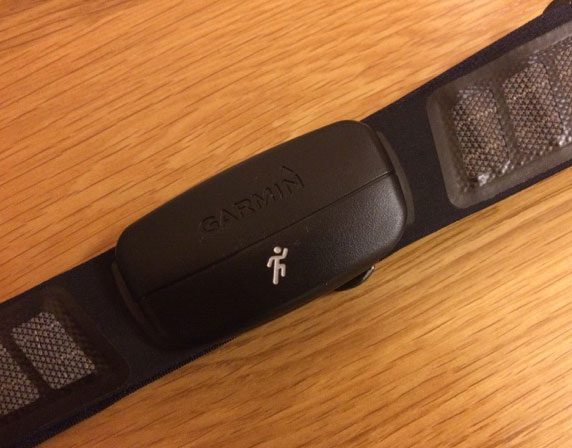
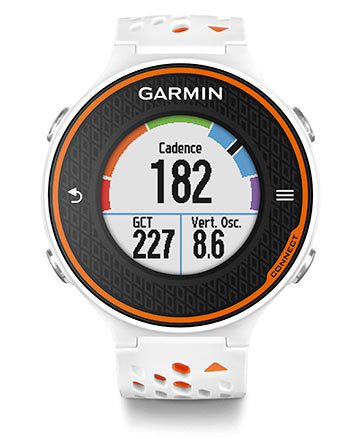



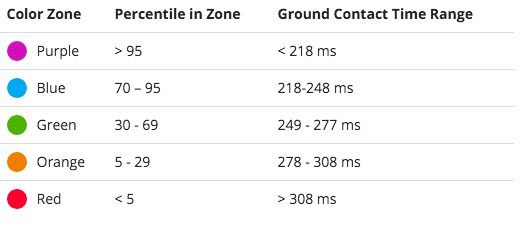

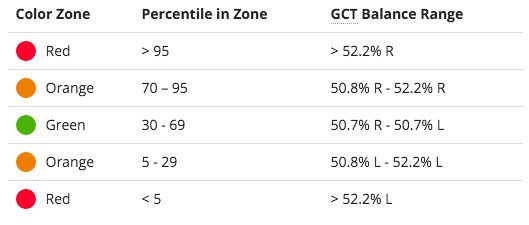

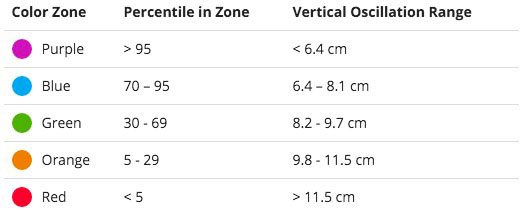
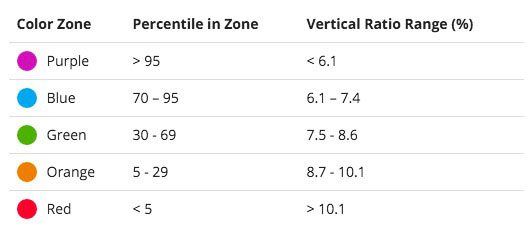








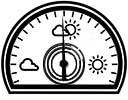







Feel free to post some of your Advance Run Dynamic data or links to your runs with Advanced Run Dynamics on Garmin Connect as it would be good to compare these metrics with other Garmin users.
Al.
Thanks for the comprehensively explaning each data field. This is what I missed in Garmin’s website when they released Advances Run Dynamics.
Here I share my latest data.
http://connect.garmin.com/modern/activity/1014920402
Thanks Kanan,
Definitely interesting to see how my Run Dynamics compare to others, especially as you seem to be running at a similar pace to what I am at the moment. You can see how things changed on the way back when it was down hill compared to on the way out when it was up hill as well.
Lets hope some others post their runs as well.
Al.
Just thought I’d post a quick screenshot of a recent run now that I have started increasing the pace just a little. Still nothing fast, but with increased effort and pace seems to come improved run dynamics.
Stride length increased from 1.10m to 1.24m
Cadence up from 173 to 182 spm
Those are the bits that lead to increased pace, but with it the other Advance Run Dynamics seem to have improved too.
Vertical Ratio is down from 10.4% to 8.4%
Ground Contact time is a little less at 201ms as opposed to 210ms
Ground Contact Time Balance is much more balanced at 49.9%/50.1% as opposed to 48.3%/51.5%
I’ll have to see what it looks like on a proper flat, fast run soon.
Al.
Full post on this latest run here: https://www.alananna.co.uk/blog/2016/faster-pace-run-dynamics/
Just wondering if anyone has had any luck in exporting the running dynamics data from Garmin Connect to Microsoft Excel? I know you can export the data to .csv files which produces the average of a particular metric for a given split using the cog function in the top right corner, however I would like the data it collects for every time point? Thanks
[email protected]
I haven’t tried that or even looked at the raw running dynamics, but you might have better luck getting the raw data from the .fit file on the Fenix 3 rather than attempting to get it from Garmin Connect.
Al.
https://connect.garmin.com/modern/activity/1175734233
Hello.. Above is a link to my Garmin workout… I guess it can be used as a benchmark for bad a run can be.. I’m slow I’m shoddy and I’m not gonna stop… I have been trying to analyze the data… I’d be glad if anyone can share their insights..
It’s not that bad… Yep it’s fairly slow and the cadence is also quite slow, but if you pick up your cadence I’m sure the run speed will come with it. Presumably though you don’t have the HRM-Run heart rate monitor as you don’t have any Advanced Run Dynamics data there such as Ground Contact Time, Vertical Ratio or Stride Length? You do say it’s a ‘Slow run after a long break’ so stick with it as the pace will soon increaase once you get going again.
Al.
Actually i have those readings…
my ground contact time balance is pretty off…
100 percent on my right knee…that explains the constant right knee pain ive been having…
http://i.imgur.com/3d0pVuO.png
That can’t be right – unless of course you only have one leg or were hopping along – in which case, ‘kudos’ to you as that’s a pretty good pace in that case.
If that isn’t the cause, then make sure you RHM-Run strap has been updated to the latest firmware. if you are on version 6.30 for the HRM-Run then the 2nd generation running dynamics: Vertical Ratio, Ground Contact Time Balance, and Real-time Stride Length won’t work properly. Your HRM-Run strap should be running version 6.60
Al.
Thks for sharing. Your run cadence I guess need to improve. 139 is just too low. Once cadence improves the rest should also improve
Oops… must be…i was very convinced that my right knee was screwed up.. and i had just started reading about fixing my gait..so now ill figure out how to update my HRM run.. thank you Alan.. will keep u posted…
If you connect your Fenix 3 to Garmin Express on your computer it should up date it for you. Just follow the update instructions within the Garmin Express Application.
Here’s some info on the 6.30 – 6.60 firmware update for the HRM-Run strap: http://www8.garmin.com/support/download_details.jsp?id=7603
It also has a link to download Garmin Express if you don’t already have it.
You can check what firmware you are running on the watch from the watch itself:
Settings >> System >> About – It should say Software Version 7.00 at the moment. This doesn’t tell you what firmware the HRM-Run strap is on though.
Once software updates have been transferred to the watch via Garmin Express, you need to update the watch itself. Usually a screen pops up asking you to update the watch, but if not you can check:
Settings >> System >> Software Updates and install any that need installing from there. If there’s nothing to be installed it will tell you.
Hope that Helps and let us know how you get on with it… Hopefully a firmware update will solve the issue and you’ll be running with two legs again soon! 🙂
Al.
Great write-up! I am a relatively new runner and have just ordered Forerunner 630. Do you need to have a footpod in order to calculate cadence? I thought the watch had the ability to calculate it based on arm movement as well.
Yep, it’ll record cadence without a footpod. All current Garmin running watches give you running cadence, without the need for a HR strap or footpod as they can record it using the accelerometer in the watch itself.
The Advanced Run Dynamics such as Ground Contact Time and such like need the HRM-Run Heart Rate strap though.
Al.
Thank you!!
Ground Contact Time Balance:
I have a minor comment on your analysis. It might be the case that the imbalance resulted from you running counter clockwise on a track. In this case you need to push a little more with your right leg around the curves. It would be interesting to see if this is still the case on a straight stretch of path.
Good point, why didn’t I think of that!
I do still have a slight imbalance even on straight tracks, but it seems to sort itself out if I increase the pace a little. My last run which was at around 7mins/mile pace (https://connect.garmin.com/modern/activity/1529407284) was pretty much 50:50 balanced.
I’m sure you’re right about the running counter-clockwise on a track though, it has to affect it somewhat.
Al.